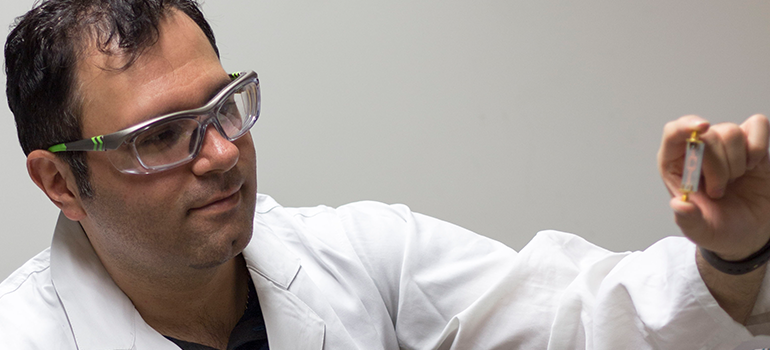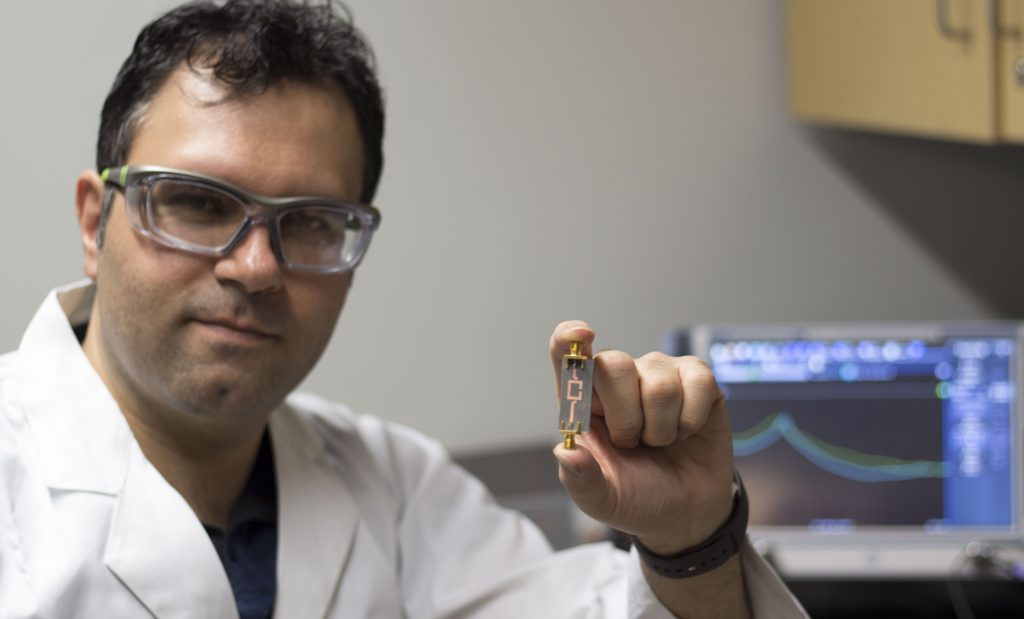A new micro, non-contact flow sensor uses microfluidics and microwave electronics to sense flow.

Using an innovative type of flow sensor, researchers at the Okanagan campus of the University of British Columbia have uncovered a new way to measure flow rates.
Controlling flow in a micro-environment such as sorting tissue cells or producing composite materials is just as important as controlling the flow in larger-scale environments like water systems and oil pipelines.
A slight change in flow rate may lead to unwanted variations in production.
Using microfluidic components and microwave electronics, Engineering Assistant Professor Mohammad Hossein Zarifi along with collaborators from the University of Calgary and the University of Alberta have developed a device that can monitor flow rates and composition in a real-time, non-contact and non-intrusive manner.
The new sensor is able to maintain a high-level of accuracy even within complex environments where bioreactors or biosensors may change the flow of components.
Typically, these sorts of micro sensors require a small pump to maintain a consistent flow for the analysis. Whereas the new sensor does not require that step and is able to monitor flow and various properties simultaneously.
“By combining microwave and microfluidic technology, the device is able to measure the flow rate at multiple points of the fluidic system” explains Zarifi. “While lab-on-a-chip solutions can be integrated to microchips, they cannot measure localized flow alterations and may interrupt the normal flow patterns in microsystems.”
By using this smaller sensor, users may reduce processing time and sample volume. Furthermore, the new device is portable and handles several tasks at the same time.
According to Zarifi “by working at a micro-scale, we are able to use this device and combine it with others to create integrated high-throughput systems that can monitor and assess fluids with little to no additional complexity.”
The research was undertaken at the University of Alberta with support from the Natural Sciences and Engineering Research Council.
The research was published in Nature.